Sustainability Assessment of the New Residential Projects in the Baltic States: A Multiple Criteria Approach
Abstract
1. Introduction
2. Methodology
- The sustainability assessment should encompass an integrated evaluation of environmental, social, and economic indicators;
- The system of indicators should conform to the local context of the country (in present research context of the Baltic States);
- The sustainability assessment is a multidimensional problem that is solved using the multiple criteria method.
3. Case Study: Sustainability Assessment of New Residential Projects in the Capital Cities of the Baltic States
3.1. Review of the Residential Market Developments in the Baltic States
3.2. Multiple Criteria Sustainability Assessment of Residential Projects
3.3. Recommendations
- An integrated sustainability assessment should simultaneously consider all three dimensions of sustainability (environmental, social, and economic). Therefore, it is recommended to use multiple-criteria assessment-based frameworks that allow for the comparison of residential projects according to different, usually conflicting, significance-sustainability indicators. The research follows criticism by other authors [10] that the currently used tools (i.e., BREEAM) ignore some of the economic and social aspects. The first residential building in the Baltic States which has been granted a BREEAM international sustainable building certificate (A6) has not been ranked as the best project as it has significant weaknesses in other sustainability aspects not included in the BREEAM methodology, i.e., economic and social indicators.The integrated framework proposed by the authors can be used for the sustainability assessment of the other residential projects in the Baltic States to monitor and shape housing policy towards sustainable development.
- Energy and atmosphere considerations as well as the selection of environmentally friendly materials are among the top priorities of the new residential projects in the Baltic States. Therefore, developers are encouraged to build new energy-efficient residential buildings from environmentally friendly, reused, and/or recycled materials. One of the alternatives could be the development of multi-storey wooden residential buildings. Professionals state that the age of multi-storey wooden buildings has begun. This movement of the construction of multi-storey wooden buildings is transnational and being implemented in the European Union and worldwide, i.e., in Canada, Australia, and the United States. In Europe and North America, the number of multi-storey wooden buildings is constantly increasing, especially in Scandinavian countries (Sweden, Norway, and Finland). Wood may be the most environmentally friendly material available for building dwellings or businesses. A building with 1 m3 of wood stores 1 ton of CO2.
- From the economic point of view, new residential projects should be affordable, and from the social perspective, infrastructure efficient in respect to public transportation and access to the most important public amenities (schools, kindergartens, healthcare institutions, etc.). Therefore, residential projects in already developed areas of cities are preferred. One of the options is the regeneration of deteriorated properties and the development of new multifunctional projects, including reconstruction of old buildings into new, quality premises.
- The analysis has revealed that new residential projects in Estonia have been ranked higher compared to projects implemented in Lithuania and Latvia. Good Estonian practices could be transferred to these countries. In Lithuania, it is recommended to use more environmentally friendly materials (e.g., wood instead of concrete and steel) and to implement more technological and design innovations, including low-energy heating solutions, use of smart technologies, and increased functionality of apartments. For Latvia, it is recommended to construct buildings with higher energy efficiency and to ensure adequate infrastructure while choosing a location. For all three Baltic States, it is recommended to follow all the dimensions of sustainability. The developed framework of indicators could be used as a background in this case.
- The Baltic States can adopt sustainable residential construction practices from other developed countries in the European Union and worldwide. However, new sustainable residential projects should suit the local context, depending on the culture, legislation, policy, stakeholders, practices, and institutions.
4. Conclusions
Supplementary Materials
Author Contributions
Acknowledgments
Conflicts of Interest
References
- World Commission on Environment and Development. Our Common Future. 1987. Available online: http://www.un-documents.net/our-common-future.pdf (accessed on 10 January 2018).
- Turcu, C. Re-thinking sustainability indicators: Local perspectives of urban sustainability. J. Environ. Plan. Manag. 2013, 56, 695–719. [Google Scholar] [CrossRef]
- Dumreicher, H.; Kolb, B. Place as a social space: Fields of encounter relating to the local sustainability process. J. Environ. Manag. 2008, 87, 317–328. [Google Scholar] [CrossRef] [PubMed]
- Maliene, V.; Malys, N. High-quality housing—A key issue in delivering sustainable communities. Build. Environ. 2009, 44, 426–430. [Google Scholar] [CrossRef]
- Ding, G.K.C. Sustainable construction—The role of environmental assessment tools. J. Environ. Manag. 2008, 86, 451–464. [Google Scholar] [CrossRef] [PubMed]
- European Commission (EC). Energy Roadmap 2050; European Commission: Brussels, Belgium, 2011; Available online: https://ec.europa.eu/energy/sites/ener/files/documents/2012_energy_roadmap_2050_en_0.pdf (accessed on 10 January 2018).
- Mateus, R.; Braganca, L. Sustainability assessment and rating of buildings: Developing the methodology SBToolPT–H. Build. Environ. 2011, 46, 1962–1971. [Google Scholar] [CrossRef]
- Zhang, X.; Wu, Y.; Shen, L.; Skitmore, M. A prototype system dynamic model for assessing the sustainability of construction projects. Int. J. Proj. Manag. 2014, 32, 66–76. [Google Scholar] [CrossRef]
- Ali, H.H.; Al Nsairat, S.F. Developing a green building assessment tool for developing countries e case of Jordan. J. Build. Environ. 2009, 44, 1053–1064. [Google Scholar] [CrossRef]
- Drejeris, R.; Kavolynas, A. Multi-criteria evaluation of building sustainability behavior. Procedia Soc. Behav. Sci. 2014, 110, 502–511. [Google Scholar] [CrossRef]
- ALwaer, H.; Clements-Croome, D.J. Key performance indicators (KPIs) and priority setting in using the multi-attribute approach for assessing sustainable intelligent buildings. J. Build. Environ. 2010, 45, 799–807. [Google Scholar] [CrossRef]
- Mulliner, E.; Smallbone, K.; Maliene, V. An assessment of sustainable housing affordability using a multiple criteria decision making method. Omega 2013, 41, 270–279. [Google Scholar] [CrossRef]
- Mulliner, E.; Malys, N.; Maliene, V. Comparative analysis of MCDM methods for the assessment of sustainable housing affordability. Omega 2016, 59, 146–156. [Google Scholar] [CrossRef]
- Yu, W.; Li, B.; Yang, X.; Wang, Q. A development of a rating method and weighting system for green store buildings in China. Renew. Energy 2015, 73, 123–129. [Google Scholar] [CrossRef]
- Nilashi, M.; Zakaria, R.; Ibrahim, O.; Majid, M.Z.A.; Zin, R.M.; Chugtai, M.W.; Abidin, N.I.Z.; Sahamir, S.R.; Yakubu, D.A. A knowledge-based expert system for assessing the performance level of green buildings. Knowl. Based Syst. 2015, 86, 194–209. [Google Scholar] [CrossRef]
- Markelj, J.; Kuzman, M.K.; Grošelj, P.; Zbašnik-Senegačnik, M. A simplified method for evaluating building sustainability in the early design phase for architects. Sustainability 2014, 6, 8775–8795. [Google Scholar] [CrossRef]
- Chandratilake, S.R.; Dias, W.P.S. Sustainability rating systems for buildings: Comparisons and correlations. Energy 2013, 59, 22–28. [Google Scholar] [CrossRef]
- Viteikiene, M.; Zavadskas, E.K. Evaluating the sustainability of Vilnius city residential areas. J. Civ. Eng. Manag. 2007, 13, 149–155. [Google Scholar]
- Zavadskas, E.K.; Cavallaro, F.; Podvezko, V.; Ubarte, I.; Kaklauskas, A. MCDM assessment of a healthy and safe built environment according to sustainable development principles: A practical neighborhood approach in Vilnius. Sustainability 2017, 9, 702. [Google Scholar] [CrossRef]
- Nuuter, T.; Lill, I.; Tupenaite, L. Comparison of housing market sustainability in European countries based on multiple criteria assessment. Land Use Policy 2015, 42, 642–651. [Google Scholar] [CrossRef]
- Tupenaite, L.; Lill, I.; Geipele, I.; Naimaviciene, J. Ranking of Sustainability Indicators for Assessment of the New Housing Development Projects: Case of the Baltic States. Resources 2017, 6, 55. [Google Scholar] [CrossRef]
- Huang, I.B.; Keisler, J.; Linkov, I. Multi-criteria decision analysis in environmental sciences: Ten years of applications and trends. Sci. Total Environ. 2011, 409, 3578–3594. [Google Scholar] [CrossRef] [PubMed]
- Cegan, J.C.; Filion, A.M.; Keisler, J.M.; Linkov, I. Trends and applications of multi-criteria decision analysis in environmental sciences: Literature review. Environ. Syst. Decis. 2017, 37, 123–133. [Google Scholar] [CrossRef]
- MacCrimmon, K.R. Decision Making among Multiple—Attribute Alternatives: A Survey and Consolidated Approach; RAND Memorandum, RM-4823-ARPA; Rand Corp: Santa Monica, CA, USA, 1986. [Google Scholar]
- Podvezko, V. The Comparative Analysis of MCDA Methods SAW and COPRAS. Inz. Ekon. Eng. Econ. 2011, 22, 134–146. [Google Scholar] [CrossRef]
- State Enterprise Centre of Registers. Baltic Review 2016; State Enterprise Centre of Registers: Vilnius, Lithuania, 2016. [Google Scholar]
- EIKA. Žalgirio 135. Available online: http://www.eika.lt/en/zalgirio-135/ (accessed on 15 February 2018).
- MG Valda. Lighthouse II. Available online: http://mgvalda.lt/projektas/lighthouse-ii/ (accessed on 15 February 2018).
- HANNER. Žvėryno Namai. Available online: http://hanner.lt/en/properties/zveryno-namai/ (accessed on 15 February 2018).
- City Real Estate. Domino. Available online: https://www.cityreal.lv/en/new-projects/projekts/domino/?no_cache=1 (accessed on 10 December 2017).
- SIA Pillar Management. Miera Park House. Available online: http://www.pillar.lv/lv/sale/projects/9 (accessed on 10 December 2017).
- SIA “Domuss”. ‘Felicity Apartments’, E.Birznieka-Upīša 13 Rīga. Available online: http://www.domuss.lv/lv/jaunie_projekti/dzivokli/039felicity_apartments039_e.birznieka-upisa_13_riga/ (accessed on 10 December 2017).
- MERKO. Noblessner Home Port. Available online: http://group.merko.ee/en/projekt/noblessner-development-staapli-3-4-8-12-residential-and-business-buildings/ (accessed on 10 December 2017).
- YIT. Vibu 2/4. Available online: https://www.yit.ee/en/housing-development/tallinn/pohja-tallinn/vibu-24 (accessed on 10 December 2017).
- Meerhof 2.0. Available online: http://www.metro.ee/meerhof/en/ (accessed on 10 December 2017).
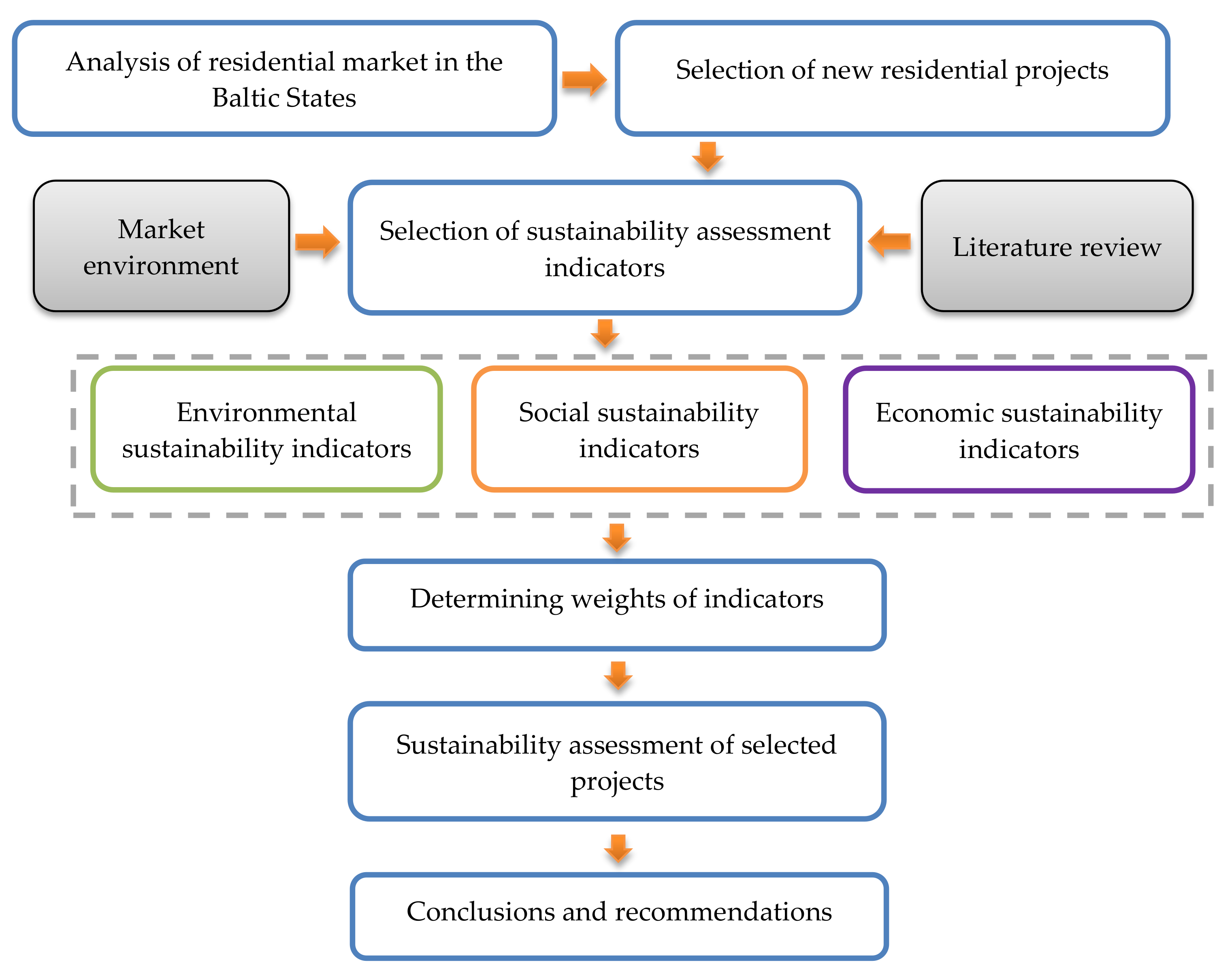
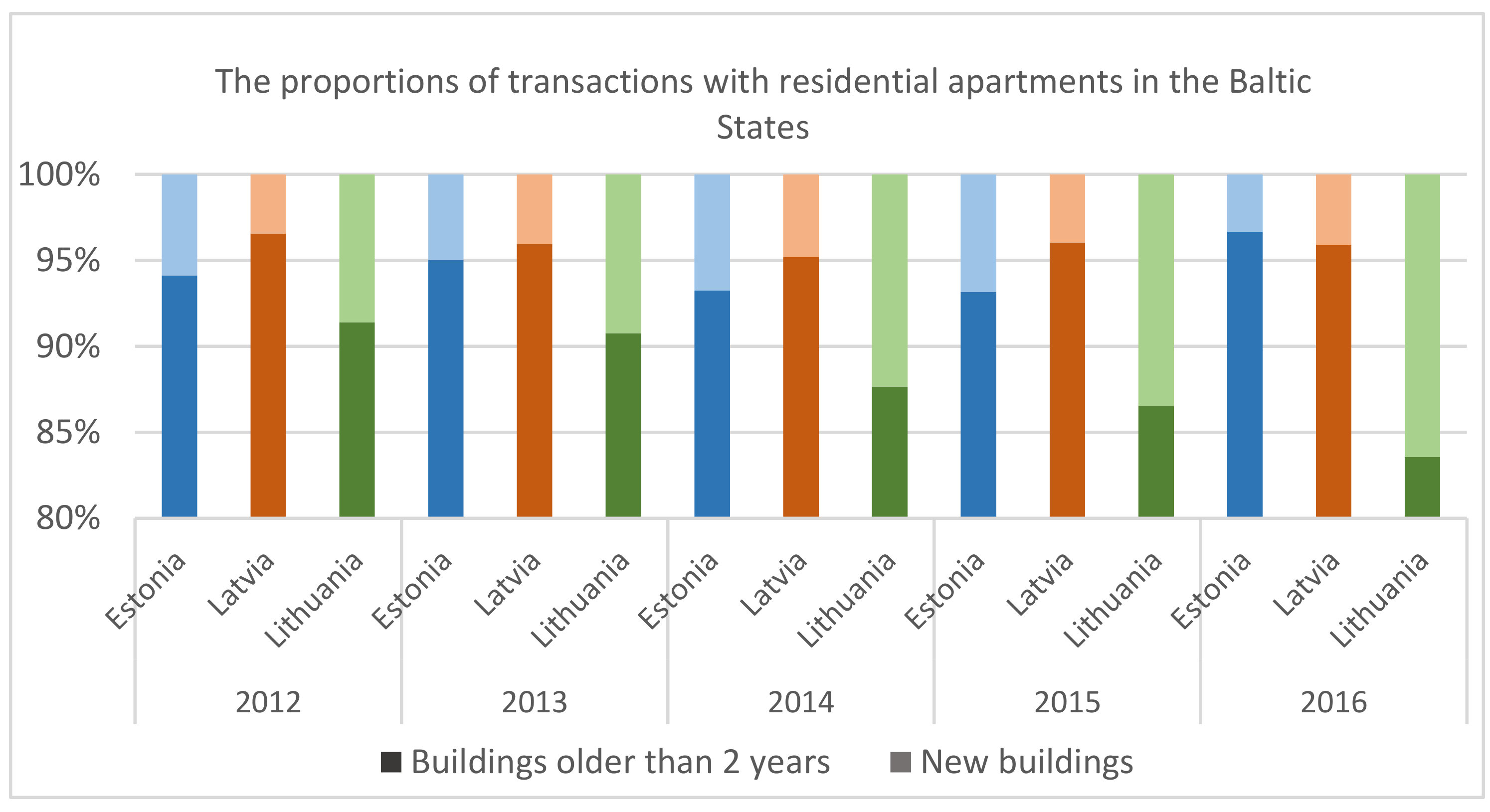
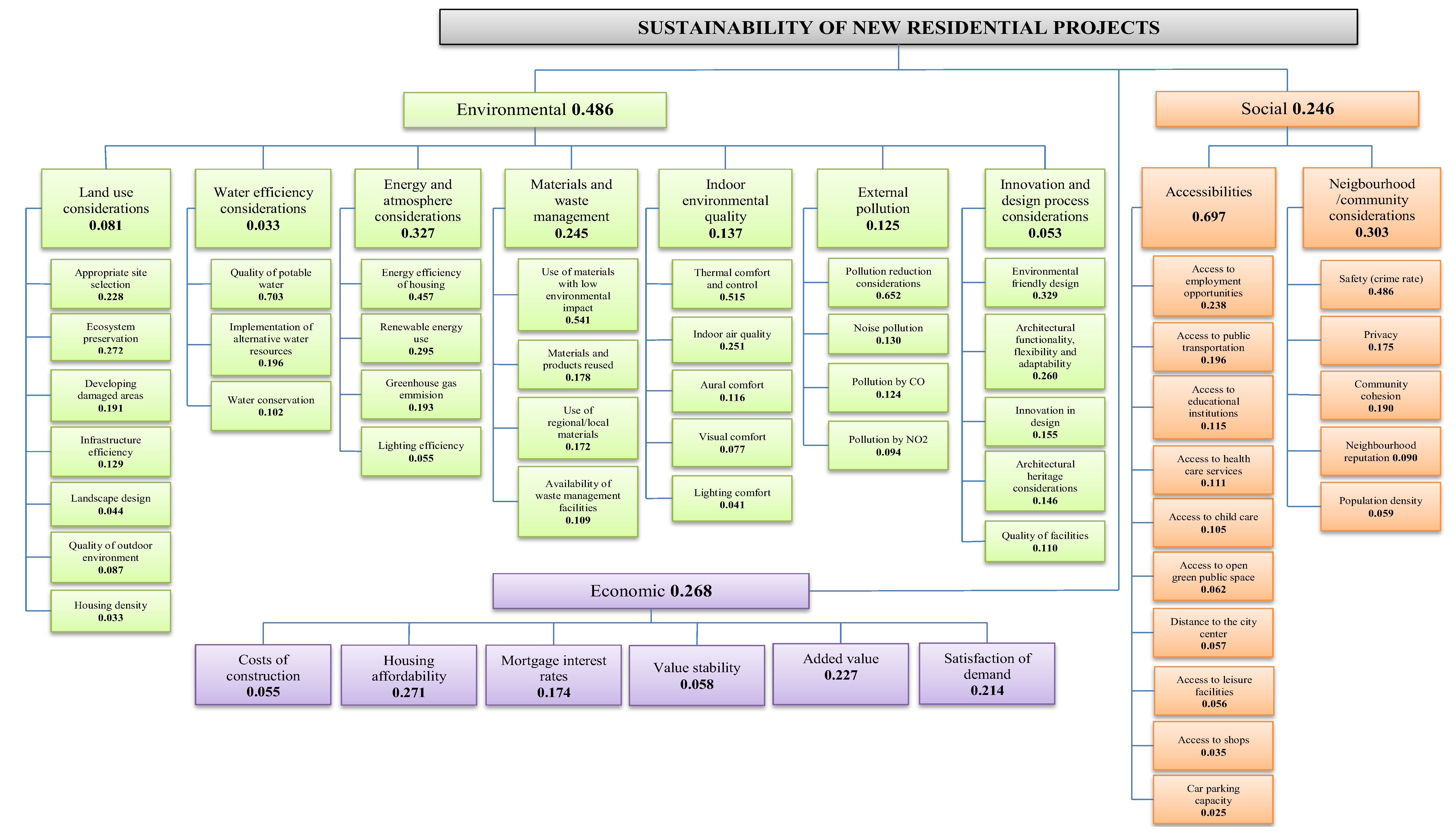
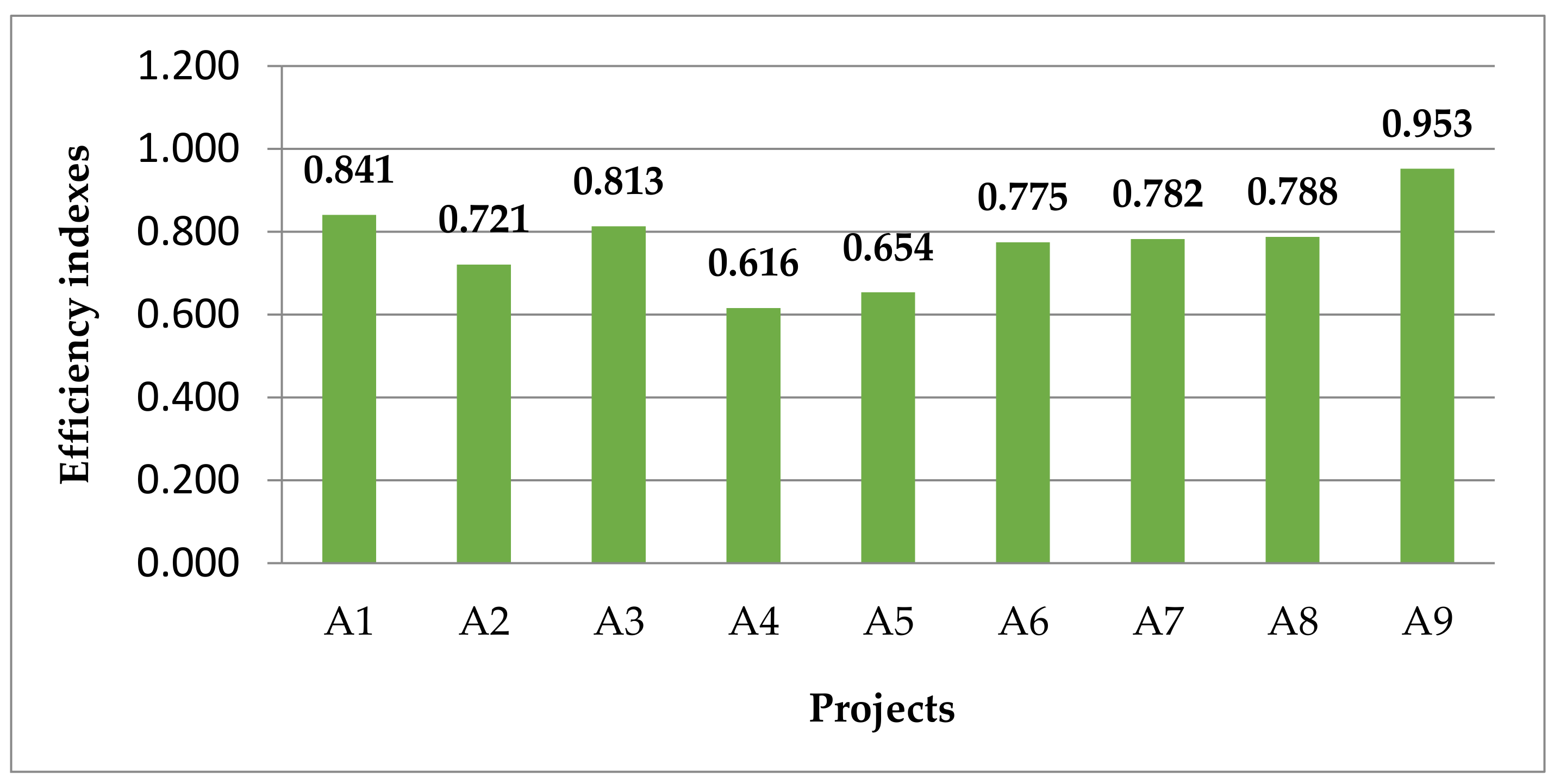
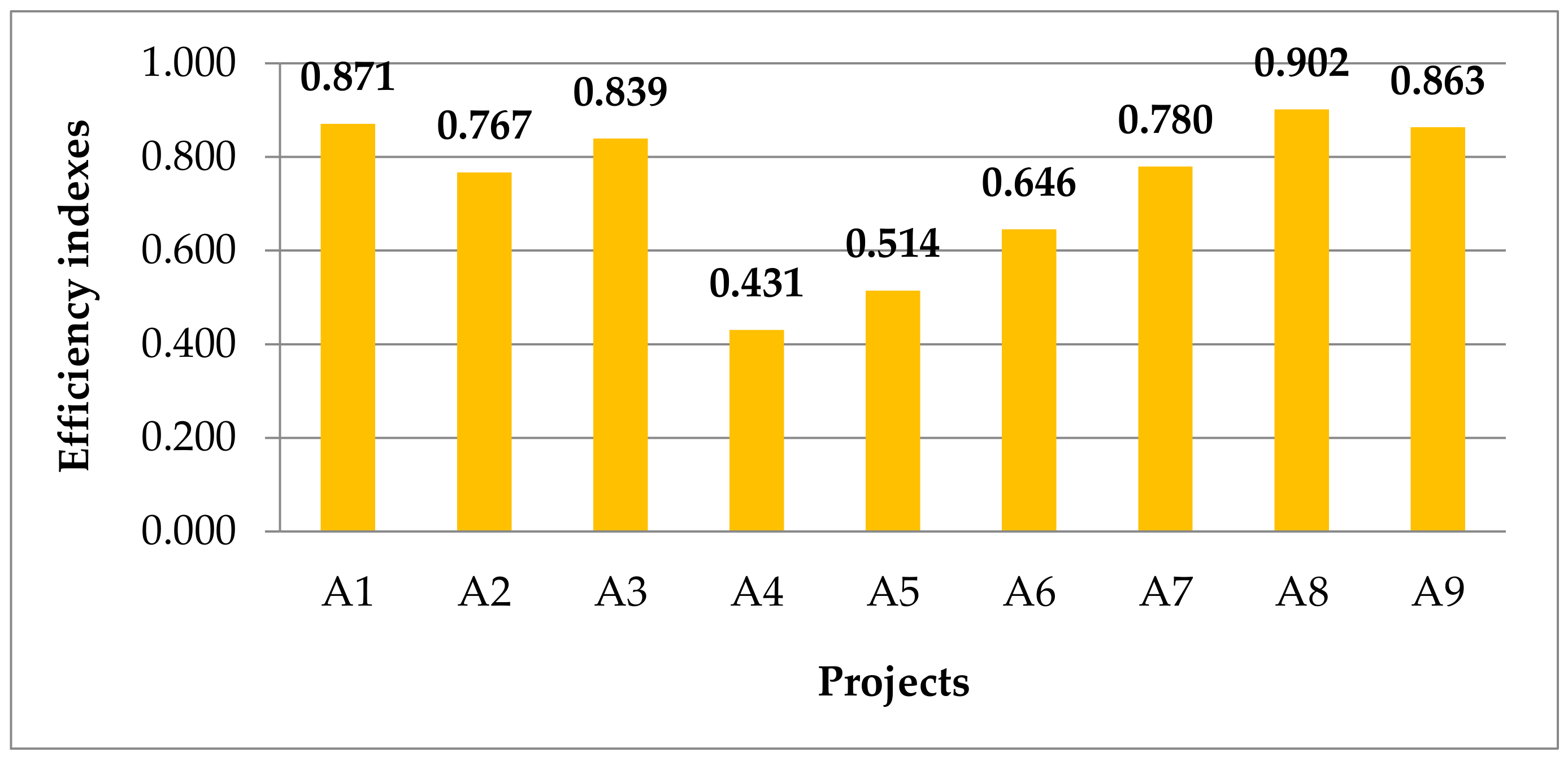
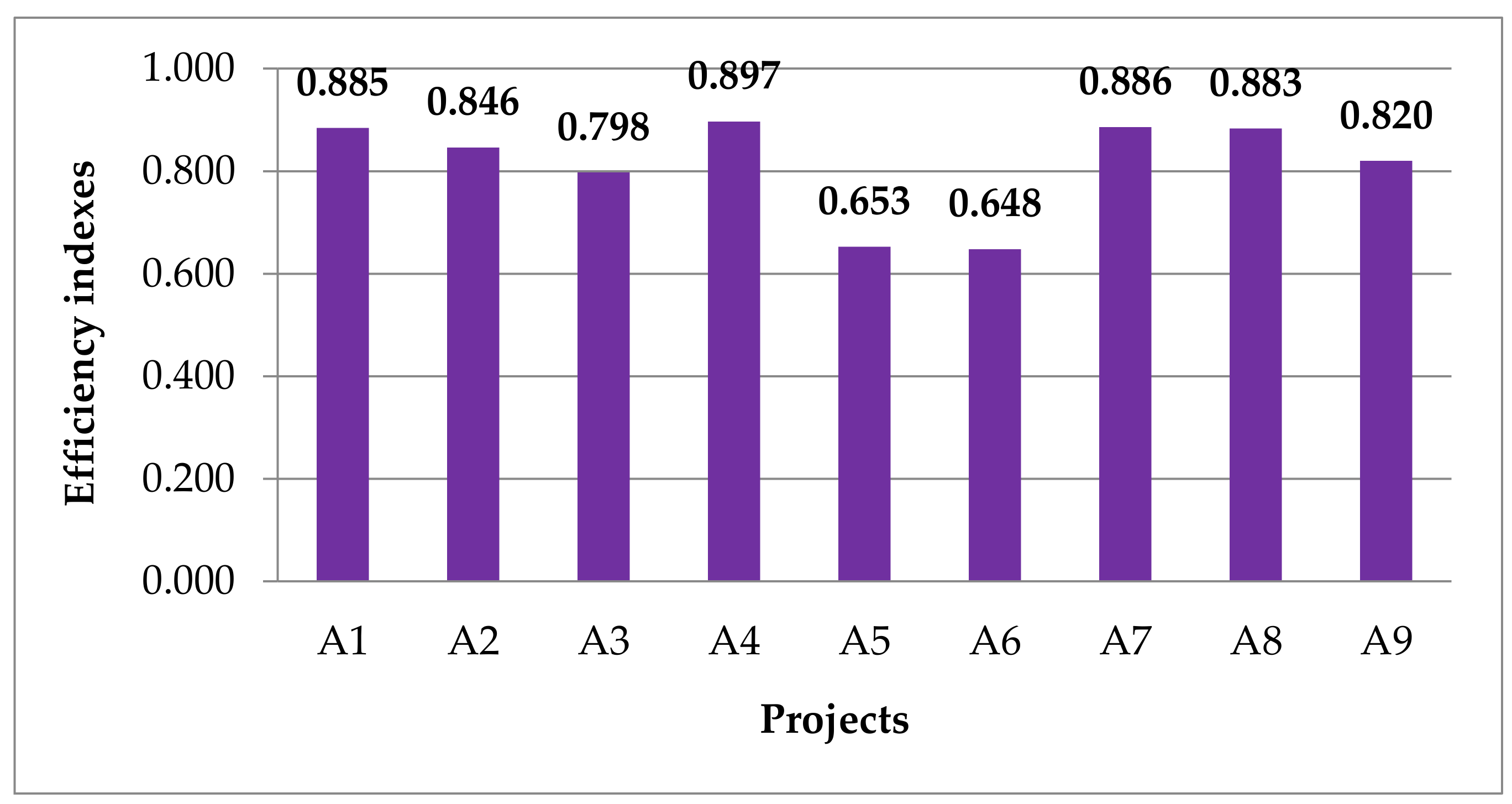
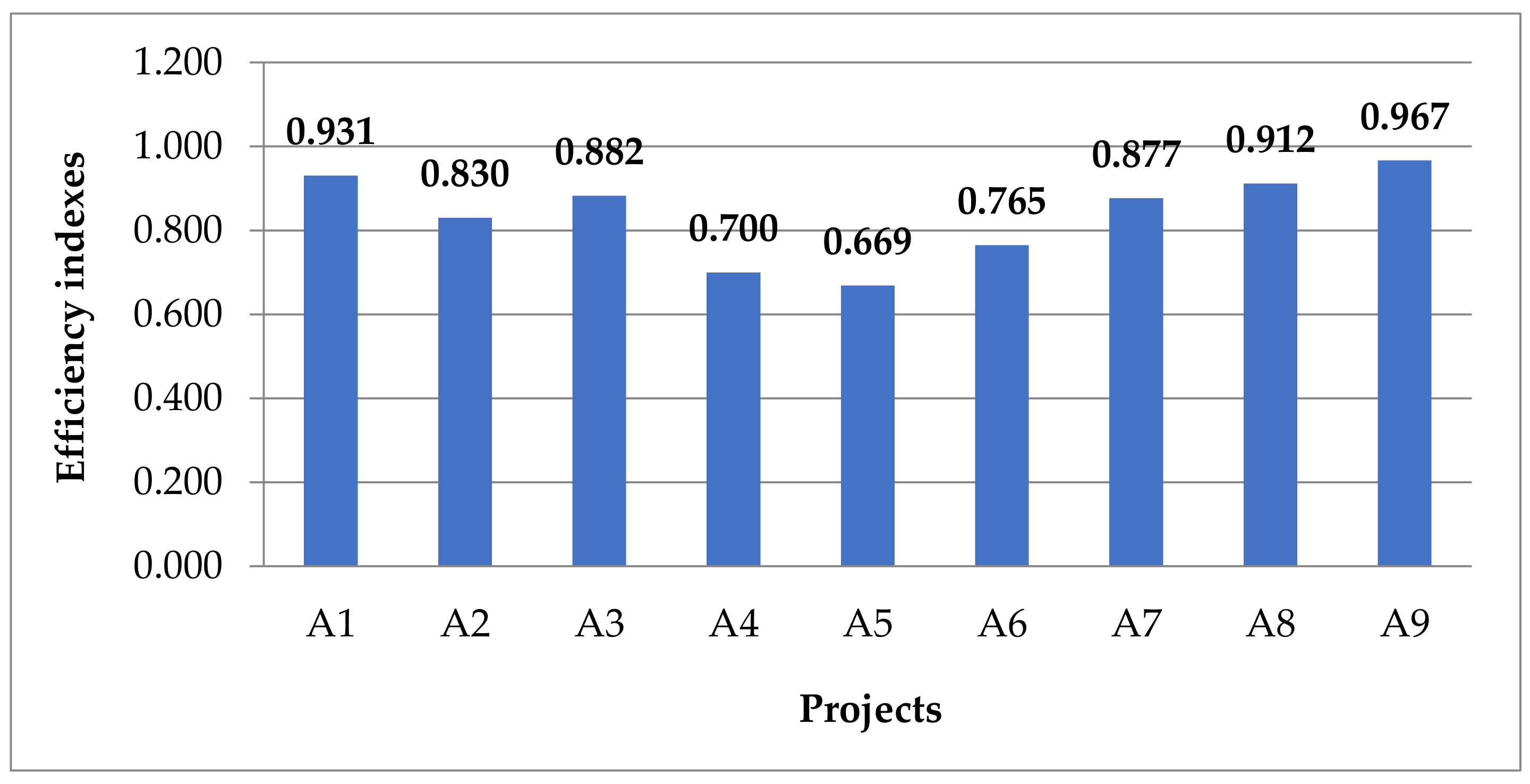
| No. | Project | Description |
|---|---|---|
| A1 | Žalgirio namai 135 (Vilnius, Lithuania) [27] 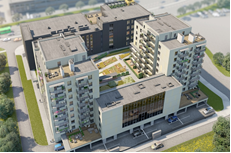 | Unique project on Žalgirio Street with 124 apartments inspired by an active city lifestyle. The building is situated in the heart of the city, offering panoramic views of Vilnius. There is a heat-recovery ventilation system and heated floors with temperature control equipped in every apartment; thus, the heat is distributed evenly across the whole apartment. The result of the air tightness testing of the completed building was 0.48 at the first stage. The respective quality certificates are available. To ensure the safety and privacy of the residents, the whole property has been fenced and locked. The whole building is under 24-h security and video surveillance. Energy class A. |
| A2 | Lighthouse II (Vilnius, Lithuania) [28] 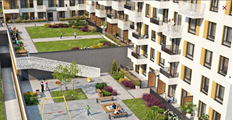 | A new multi-apartment residential building located in the Seskine and Fabijoniskes neighborhoods has 127 apartments. In the Lighthouse building, a “smart home” system has been installed for the first time in Lithuania. This system was previously installed only in individual dwellings. All architectural solutions in this project followed the high energy requirements of buildings and cost-effectiveness practices, so great attention was paid to the balance between heat-saving and openness. Windows with high thermal insulation properties were installed. There is an enclosed patio area and an underground car park monitored by IP cameras. The newly constructed three-block building will have 264 spacious apartments. A distinctive feature of the project is three leisure areas on the roof of the building: a picnic area, a “green zone”, and a reading area. Energy class B. |
| A3 | Žvėryno namai (Vilnius, Lithuania) [29] 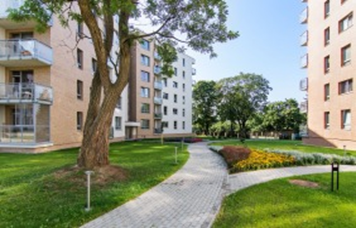 | An apartment complex with 270 units underwent development in Žvėrynas in one of the most beautiful and greenest areas of Vilnius, located between the Neris River and Vingis Park. The development of this project puts the focus on nature conservation, so only organic and environmentally friendly building materials were used. In order for the complex to be integrated into Žvėrynas landscape, the selected design has the Neris River bend-like form. Buildings are equipped with a “smart home” system and have a well-developed infrastructure. Energy class B. |
| A4 | Domino (Riga, Latvia) [30] 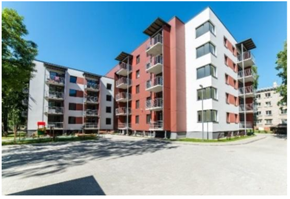 | The Domino residential building is located in a quiet and calm area called Sampeteris, which is still relatively close to the city centre. It is one 4- to 5-storey residential building, which has 51 1-, 2-, 3- or 4-room apartments and an area of 36.8–112.2 m2. The property is well-lit and landscaped, and a playground has been installed. The trees were preserved and the property was additionally landscaped with shrubs. There is an opportunity to buy a parking place in the yard. The project offers a comfortable and well-considered layout, combining aesthetic and functional features through the use of advanced technologies and high-quality materials for construction and interior decoration of the apartments. Energy class C. |
| A5 | Miera Park House (Riga, Latvia) [31] 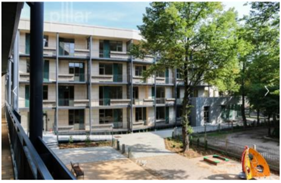 | Miera Park House is the name of an elite apartment building at Miera St. 57a in Riga. Miera Park House is one of a few Riga premium class apartment buildings constructed with the modern technology for higher life-standard demands. The complex has two buildings (five floors and four floors). Natural stone was used for the façade in combination with matte and translucent glass. Apartments with an area ranging from 62 m2 up to 238 m2 are available. There are 38 apartments in total with 1 to 4 rooms. All of the apartments and spacious balconies are located on the sunny south side, while the hallways, stairs, and elevators are on the north side of the building. Apartments are offered according to three full finishing levels, with the new tenants able to choose one of the options prepared by the designer. Apartments are fitted with high-quality kitchen equipment and all necessary appliances. Spacious underground parking for 50 cars is available. Storage spaces are available in the basement of the building. The property (3811 m2) is fenced, landscaped, well-lit, and secure. The yard is situated between the two buildings and has trees and shrubs, a children’s playground, and benches. The landscaped roof terrace with sauna complex is available to ensure the comfort of tenants. Energy class C. |
| A6 | Felicity Apartments (Riga, Latvia) [32] 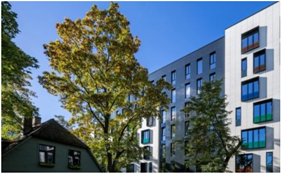 | Felicity Apartments is a seven-storey modern building. The building offers 62 comfortable (1-, 2-, 3- and 4-room) apartments of 35–101 m2. Apartments fully correspond to modern functional requirements and are designed using sound and rational planning. The apartments are fully finished and come equipped with energy-saving solutions, underground parking, and storage spaces. Most of the apartments have French balconies, while the apartments on the upper floors have terraces with beautiful views of the city towers. In turn, three apartments on the first floor come with a spacious garden terrace with a private backyard. Each apartment has its own water and heat meter that can be remotely read by the house manager. The apartment building is located in the historical center, close to parks, and only a few minutes away from the Old Town. Felicity Apartments is the first residential building in the Baltic States which has been granted the BREEAM international sustainable building certificate. Energy class B. |
| A7 | Noblessner Home Port (Tallinn, Estonia) [33] 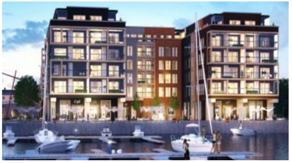 | The Noblessner Home Port (Kodusadam) development encompasses a total of 4 buildings that will have 208 apartments and close to 3700 m2 of office and retail space. At the first stage, a 6-storey, 66-unit apartment building will be built right on the seafront, along with a 279-space underground garage. Due to their seaside location and views, the exclusive commercial spaces planned for the ground floor of the Staapli 4 apartment building are perfect for restaurants and cafes as well as companies that are willing to capitalize on a seaside ambience. The second stage will consist of 3 apartment buildings at Staapli 3, 8, and 12. Noblessner is a unique residential development project where modern-quality apartments meet a historical environment. This integral development is centered on the people living there—cars will be moved to an underground level, the interior courtyards have private play and recreational areas, and the buildings are surrounded by paths meant for pedestrians, an open plaza area, and promenade. The seaside apartments are spacious with ample light, high energy efficiency, a good interior climate, and cozy floor heating. All apartments have glass-enclosed balconies, and some apartments have a sauna and readiness for a fireplace. Design management was performed through the use of an integrated BIM mode. In addition, building information modeling was used to calculate construction quantities, arrange procurements, plan work, prepare 4D schedules, draw up the budget, and prepare visualizations. Energy class B. |
| A8 | Vibu 2/4 (Tallinn, Estonia) [34] 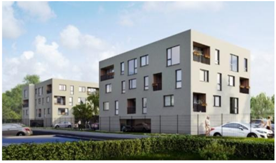 | The Sea Gate residential development is located near the Seaplane Harbour close to Kalamaja Park. Vibu 2 and 4 are located in a historically stately and picturesque area of the Kalamaja milieu. The project is distinguished by tasteful and modern Scandinavian architecture and thoughtful room layouts. The Sea Gate development project is composed of five four-storey buildings with a single stairwell. Buildings are situated between the recreation areas, children’s playground, and private courtyards. Buildings are connected with underground parking. Underground parking can be accessed from all buildings. Each staircase is served by a spacious elevator. Each apartment has a storage room, which is located on the parking floor of the buildings. The Vibu 2 and 4 project has a total of 53 (apartments 1–25 at Vibu 2 and apartments 26–53 at Vibu 4) 1- to 4-room apartments with an area of 26.8–123.4 m2. The apartments have glazed balconies and fenced terraces on the ground floors. A “B” building energy performance certificate has been issued. The building is designed for floor heating, and heat supply is provided by central heating. The house has an apartment-based heat recovery ventilation system. In addition, separate extraction equipment from the staircase, storage rooms, and kitchen equipment are planned. |
| A9 | Meerhof 2.0 (Tallinn, Estonia) [35] 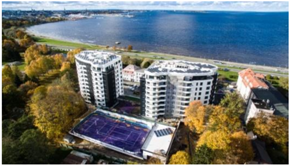 | The building at Pirita tee 26 is a 9-storey apartment building that houses 73 apartments with 2 underground levels with a car park for 101 cars. Net area: 10,800 m2 in total. It is located on the eastern shore of the Bay of Tallinn, overlooking downtown Tallinn. The Meerhof complex consists of the exclusive apartment building constructed in 2015 and 2 separate towers being built at Pirita tee 20a, which are connected to each other by an underground car park to ensure convenient parking irrespective of the weather. A private rest, sports, and green area with a children’s playground is located between the towers. Functional interior plans have primarily been used as the basis for designing the building. The selected materials are deliberately exclusive. A stepped landscaping fitting in with the waved line of the planned balconies has been designed in front of the car park planned between the buildings. The lighting in the area in front of the entrances has been thought through and the paving is covered with burnt granite tiles. The façades facing the Song Festival Grounds are covered with high-quality composite tiles. The 10th floor has a partial step back and larger terraces than the others. The architect of the building is Tormi Sooväli; the interior design was done by Riina Harik and Külli Salum, interior designers from SAHA IN. Energy class B. |
| Category | Unit of Measurement | Indicators | LITHUANIA | LATVIA | ESTONIA | ||||||
|---|---|---|---|---|---|---|---|---|---|---|---|
| A1 | A2 | A3 | A4 | A5 | A6 | A7 | A8 | A9 | |||
| Environmental sustainability dimension | |||||||||||
| Land use considerations | Points | Appropriate site selection | 8 | 6 | 8 | 6 | 7 | 8 | 9 | 9 | 8 |
| Points | Developing damaged areas | 8 | 4 | 4 | 4 | 6 | 6 | 10 | 4 | 4 | |
| Points | Landscape design | 5 | 7 | 9 | 5 | 7 | 7 | 10 | 7 | 9 | |
| Points | Ecosystem preservation | 2 | 3 | 8 | 3 | 5 | 6 | 8 | 5 | 9 | |
| Points | Quality of outdoor environment | 5 | 7 | 8 | 5 | 7 | 7 | 10 | 8 | 9 | |
| Number, km2 | Housing density | 56.09 | 42.2 | 72.59 | 125 | 69.5 | 56.6 | 56.2 | 48.9 | 68.22 | |
| Points | Infrastructure efficiency | 10 | 8 | 9 | 7 | 7 | 8 | 10 | 8 | 9 | |
| Water efficiency considerations | Points | Quality of potable water | 9 | 8 | 10 | 9 | 9 | 10 | 9 | 10 | 10 |
| Points | Implementation of alternative water resources | 1 | 1 | 1 | 2 | 2 | 2 | 1 | 1 | 1 | |
| Points | Water conservation | 1 | 1 | 1 | 3 | 5 | 5 | 1 | 1 | 1 | |
| Energy and atmosphere considerations | Points | Energy efficiency of housing | 4 | 3 | 3 | 2 | 2 | 3 | 3 | 3 | 3 |
| Points | Lighting efficiency | 5 | 9 | 7 | 5 | 5 | 9 | 8 | 8 | 9 | |
| Points | Renewable energy use | 8 | 1 | 1 | 1 | 2 | 1 | 1 | 1 | 10 | |
| Tons/year | Greenhouse gas emission | 25.92 | 38.72 | 30.09 | 47.6 | 47.6 | 38.5 | 39.5 | 30.2 | 32.9 | |
| Materials and waste management | Points | Use of materials with low environmental impact | 7 | 6 | 9 | 6 | 7 | 8 | 8 | 8 | 9 |
| Points | Use of regional/local materials | 50 | 65 | 60 | 50 | 45 | 72 | 50 | 60 | 70 | |
| Points | Materials and products reused | 10 | 10 | 15 | 10 | 10 | 20 | 13 | 20 | 20 | |
| Points | Availability of waste management facilities | 9 | 9 | 9 | 7 | 8 | 9 | 9 | 10 | 9 | |
| Indoor environmental quality | Points | Thermal comfort and control | 9 | 10 | 8 | 8 | 8 | 9 | 8 | 8 | 9 |
| Points | Indoor air quality (IAQ) solutions | 9 | 7 | 8 | 8 | 7 | 7 | 8 | 8 | 9 | |
| Points | Lighting comfort | 7 | 9 | 8 | 9 | 8 | 8 | 9 | 9 | 10 | |
| Points | Visual comfort | 5 | 7 | 8 | 8 | 8 | 9.00 | 10 | 7 | 10 | |
| Points | Aural comfort | 10 | 8 | 8 | 7.00 | 8.00 | 8.00 | 9 | 9 | 10 | |
| External pollution | μg/m3 | Pollution by NO2 | 25 | 18.4 | 23.92 | 35 | 60 | 60 | 21 | 18.3 | 14.3 |
| μg/m3 | Pollution by CO | 0.34 | 0.26 | 0.3 | 0.29 | 0.3 | 0.3 | 0.45 | 0.36 | 0.65 | |
| dB | Noise pollution | 41.56 | 62.93 | 49.17 | 62 | 75 | 67 | 58.23 | 32.3 | 44.2 | |
| Points | Pollution reduction considerations | 4 | 6 | 7 | 6 | 6 | 6 | 8 | 7 | 9 | |
| Innovation and design process considerations | Points | Innovation in design | 7 | 10 | 8 | 6 | 7 | 8 | 9 | 9 | 9 |
| Points | Environmentally friendly design | 6 | 7 | 8 | 7 | 8 | 9 | 9 | 8 | 10 | |
| Points | Quality of facilities/equipment | 8 | 8 | 8 | 7 | 9 | 9 | 9 | 8 | 10 | |
| Points | Architectural heritage considerations | 5 | 6 | 7 | 8 | 8 | 8 | 10 | 8 | 8 | |
| Points | Architectural functionality, flexibility, and adaptability | 8 | 8 | 9 | 7 | 9 | 8 | 9 | 8 | 10 | |
| Social sustainability dimension | |||||||||||
| Accessibilities | km | Distance to the city centre | 2 | 5.4 | 1.2 | 8 | 3 | 3.2 | 2.6 | 11 | 6.2 |
| m | Access to public transportation | 240 | 350 | 150 | 400 | 2000 | 400 | 200 | 120 | 100 | |
| Number per 1000 residents | Access to employment opportunities | 21.5 | 9.3 | 10.4 | 4.6 | 4.6 | 4.8 | 8.1 | 9.2 | 9.9 | |
| m | Access to educational institutions | 330 | 300 | 850 | 1800 | 2000 | 900 | 800 | 600 | 560 | |
| m | Access to shops | 490 | 350 | 450 | 150 | 650 | 350 | 300 | 200 | 320 | |
| m | Access to health care services | 450 | 1200 | 1050 | 2800 | 47 | 2300 | 400 | 500 | 250 | |
| m | Access to child care | 320 | 300 | 650 | 200 | 800 | 4 | 350 | 300 | 260 | |
| m | Access to leisure facilities | 950 | 350 | 200 | 200 | 200 | 200 | 120 | 50 | 140 | |
| m | Access to open green public space | 350 | 10 | 10 | 150 | 200 | 200 | 40 | 20 | 50 | |
| Number of cars | Car parking capacity | 40 | 30 | 10 | 50 | 40 | 50 | 50 | 56 | 101 | |
| Neighborhood/community considerations | Crime rate per 1000 residents | Safety (crime rate) | 13.95 | 6.26 | 7.22 | 12 | 15 | 9 | 4.2 | 5.8 | 10.2 |
| Points | Neighborhood reputation | 9 | 6 | 10 | 5 | 7 | 7 | 10 | 8 | 8 | |
| Number of residents per km2 | Population density | 4917.31 | 9697.32 | 4103.33 | 2117 | 2117 | 2117 | 3820.22 | 4589.33 | 3890.36 | |
| Points | Community cohesion | 6 | 9 | 8 | 4 | 4 | 7 | 8 | 8 | 7 | |
| Points | Privacy | 8 | 6 | 6 | 6 | 9 | 7 | 8 | 7 | 8 | |
| Economic sustainability dimension | |||||||||||
| EUR/m2 | Price of the apartment | 1689 | 1530 | 1850 | 1142 | 1773 | 1909 | 3 012 | 2 560 | 3348 | |
| Number | Housing affordability | 2.6 | 2.36 | 2.85 | 2.34 | 3.21 | 4.27 | 2.47 | 2.1 | 2.74 | |
| Percentage | Mortgage interest rates | 2.8 | 2.5 | 2.8 | 2.7 | 2.7 | 2.7 | 3.2 | 2.8 | 2.5 | |
| Percentage | Value stability | 85 | 50 | 80 | 85 | 85 | 85 | 90 | 90 | 85 | |
| Points | Added value | 9 | 7 | 8 | 8 | 6 | 7 | 10 | 8 | 9 | |
| Percentage | Satisfaction of demand | 100 | 93 | 82 | 94 | 41 | 50 | 100 | 90 | 75 | |
| Category | A1 | A2 | A3 | A4 | A5 | A6 | A7 | A8 | A9 |
|---|---|---|---|---|---|---|---|---|---|
| Land use considerations | |||||||||
| Index | 0.629 | 0.530 | 0.779 | 0.361 | 0.474 | 0.516 | 0.721 | 0.452 | 0.615 |
| Rank | 3 | 5 | 1 | 9 | 8 | 6 | 2 | 7 | 4 |
| Water efficiency considerations | |||||||||
| Index | 0.751 | 0.680 | 0.821 | 0.889 | 0.930 | 1.000 | 0.751 | 0.821 | 0.821 |
| Rank | 5 | 6 | 4 | 3 | 2 | 1 | 5 | 4 | 4 |
| Energy and atmosphere considerations | |||||||||
| Index | 0.917 | 0.556 | 0.581 | 0.394 | 0.423 | 0.557 | 0.548 | 0.587 | 0.845 |
| Rank | 1 | 6 | 4 | 9 | 8 | 5 | 7 | 3 | 2 |
| Materials and waste management | |||||||||
| Index | 0.727 | 0.703 | 0.916 | 0.645 | 0.704 | 0.929 | 0.814 | 0.911 | 0.984 |
| Rank | 6 | 8 | 3 | 9 | 7 | 2 | 5 | 4 | 1 |
| Indoor environmental quality | |||||||||
| Index | 0.898 | 0.894 | 0.822 | 0.815 | 0.794 | 0.854 | 0.853 | 0.830 | 0.949 |
| Rank | 2 | 3 | 7 | 8 | 9 | 4 | 5 | 6 | 1 |
| External pollution | |||||||||
| Index | 0.539 | 0.698 | 0.756 | 0.652 | 0.621 | 0.627 | 0.787 | 0.800 | 0.891 |
| Rank | 9 | 5 | 4 | 6 | 8 | 7 | 3 | 2 | 1 |
| Innovation and design process considerations | |||||||||
| Index | 0.675 | 0.769 | 0.811 | 0.699 | 0.822 | 0.844 | 0.915 | 0.816 | 0.955 |
| Rank | 9 | 7 | 6 | 8 | 4 | 3 | 2 | 5 | 1 |
| Category | A1 | A2 | A3 | A4 | A5 | A6 | A7 | A8 | A9 |
|---|---|---|---|---|---|---|---|---|---|
| Accessibilities | |||||||||
| Index | 0.497 | 0.385 | 0.439 | 0.197 | 0.247 | 0.314 | 0.340 | 0.468 | 0.475 |
| Rank | 1 | 5 | 4 | 9 | 8 | 7 | 6 | 3 | 2 |
| Neighborhood/community considerations | |||||||||
| Index | 0.535 | 0.700 | 0.689 | 0.475 | 0.518 | 0.633 | 0.933 | 0.756 | 0.608 |
| Rank | 7 | 5 | 2 | 9 | 8 | 6 | 1 | 4 | 3 |
© 2018 by the authors. Licensee MDPI, Basel, Switzerland. This article is an open access article distributed under the terms and conditions of the Creative Commons Attribution (CC BY) license (http://creativecommons.org/licenses/by/4.0/).
Share and Cite
Tupenaite, L.; Kaklauskas, A.; Lill, I.; Geipele, I.; Naimaviciene, J.; Kanapeckiene, L.; Kauskale, L. Sustainability Assessment of the New Residential Projects in the Baltic States: A Multiple Criteria Approach. Sustainability 2018, 10, 1387. https://doi.org/10.3390/su10051387
Tupenaite L, Kaklauskas A, Lill I, Geipele I, Naimaviciene J, Kanapeckiene L, Kauskale L. Sustainability Assessment of the New Residential Projects in the Baltic States: A Multiple Criteria Approach. Sustainability. 2018; 10(5):1387. https://doi.org/10.3390/su10051387
Chicago/Turabian StyleTupenaite, Laura, Arturas Kaklauskas, Irene Lill, Ineta Geipele, Jurga Naimaviciene, Loreta Kanapeckiene, and Linda Kauskale. 2018. "Sustainability Assessment of the New Residential Projects in the Baltic States: A Multiple Criteria Approach" Sustainability 10, no. 5: 1387. https://doi.org/10.3390/su10051387
APA StyleTupenaite, L., Kaklauskas, A., Lill, I., Geipele, I., Naimaviciene, J., Kanapeckiene, L., & Kauskale, L. (2018). Sustainability Assessment of the New Residential Projects in the Baltic States: A Multiple Criteria Approach. Sustainability, 10(5), 1387. https://doi.org/10.3390/su10051387







